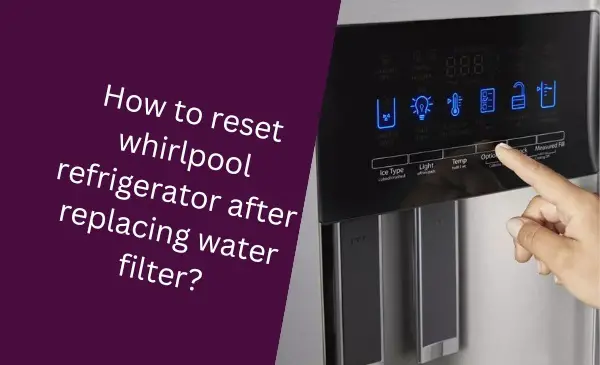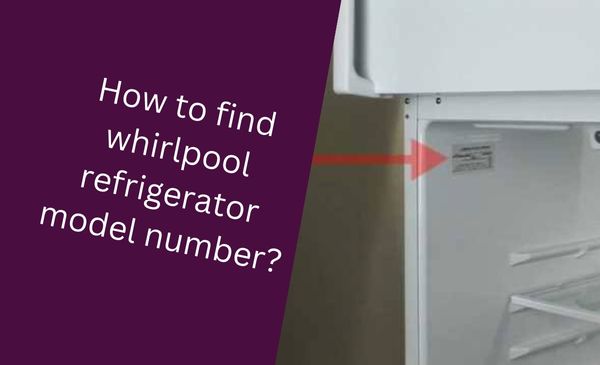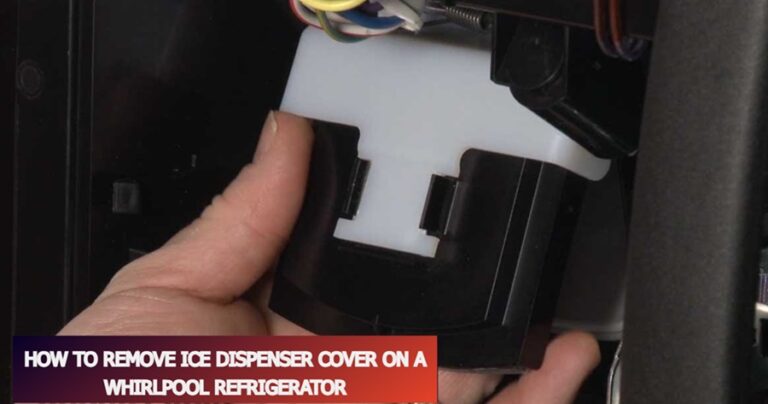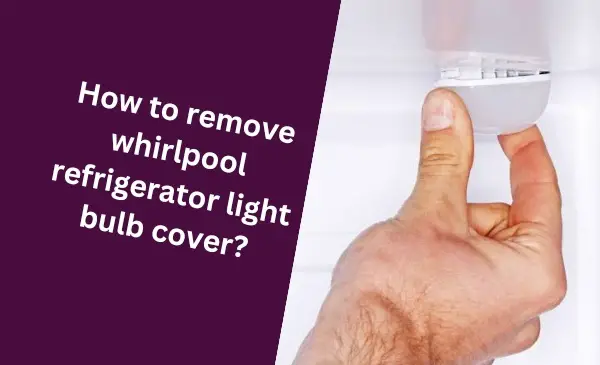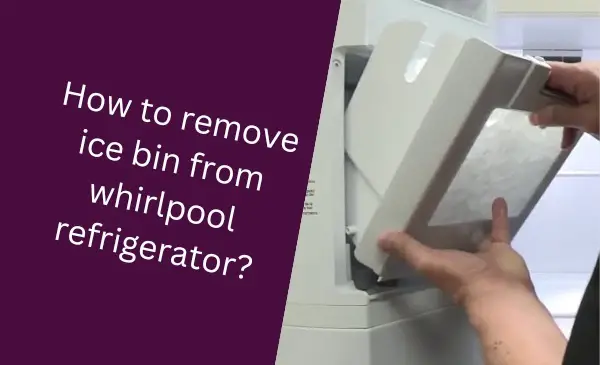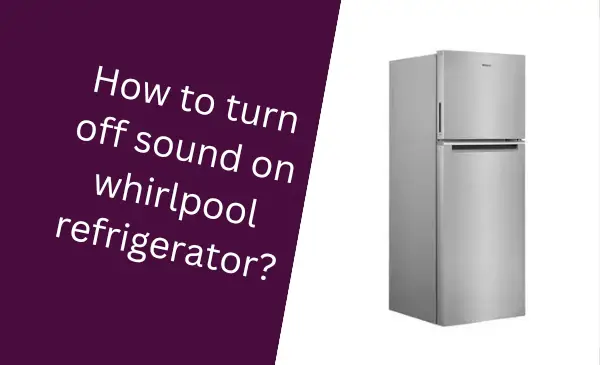Have you noticed water pooling in the bottom of your Whirlpool refrigerator? Or maybe there’s a funky smell coming from the freezer? If so, it’s likely that the defrost drain is clogged.
The defrost drain is a tube that carries water away from the evaporator coils during the defrost cycle. When the drain is clogged, water can back up and cause a variety of problems, including leaks, mold growth, and unpleasant odors.
In this article, we’ll show you how to clean the defrost drain on your Whirlpool refrigerator in a few simple steps.
Understanding The Defrost Drain And Its Importance
What Is A Defrost Drain And Why Is It Important?
In a whirlpool refrigerator, the defrost drain plays a crucial role in preventing water accumulation and leakage. During the defrosting process, ice on the evaporator coils melts and turns into water, which needs to be directed away from the refrigerator. This is where the defrost drain comes into play.
The Role Of The Defrost Drain In Preventing Water Accumulation And Leakage.
The defrost drain is designed to channel the melted ice and condensation away from the fridge and into a drain pan. Without a properly functioning defrost drain, water can accumulate inside the refrigerator and cause a range of issues, including mold growth, unpleasant odors, and even damage to the interior components.
When the defrost drain becomes clogged or blocked, water begins to collect, eventually overflowing and leaking out of the refrigerator. This not only creates a mess but can also damage the flooring and surrounding areas. It is essential to regularly clean and maintain the defrost drain to ensure it functions optimally.
Cleaning the defrost drain is a task that can be easily accomplished with a few simple steps. By keeping the drain clean, you can avoid potential water damage, maintain the overall efficiency of your Whirlpool refrigerator, and prolong its lifespan.
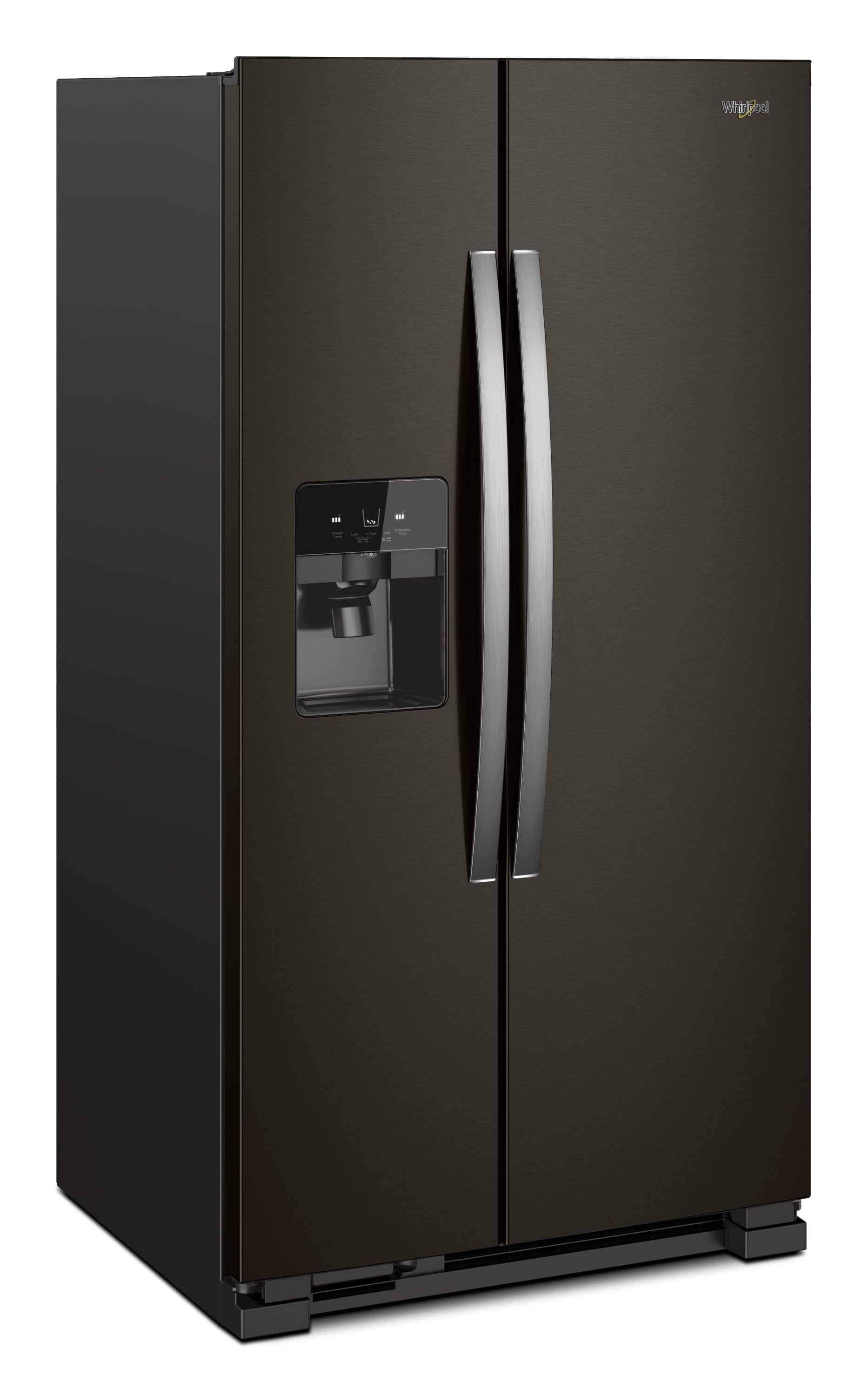
Credit: www.lowes.com
Signs Of A Clogged Defrost Drain
A clogged defrost drain in your Whirlpool refrigerator can lead to a host of problems, impacting its function and efficiency. It is important to be able to identify the signs indicating that your defrost drain may be clogged, so you can take the necessary steps to clean it and ensure the proper functioning of your refrigerator.
Identifying Common Signs Indicating A Clogged Defrost Drain
When your Whirlpool refrigerator’s defrost drain becomes clogged, there are a few common signs that you can look out for:
- Water pooling at the bottom of the freezer – One of the telltale signs of a clogged defrost drain is the presence of water at the bottom of the freezer compartment. If you notice water collecting and not draining properly, it is likely that the drain is clogged.
- Ice buildup in the freezer – Another sign of a clogged defrost drain is the formation of ice in the freezer compartment. As the water from the defrost cycle cannot drain properly, it freezes and accumulates, leading to ice buildup.
- Water leaking onto the floor – If the excess water from the clogged defrost drain cannot drain out of the freezer, it may start leaking from the appliance onto the floor. This can be a messy and potentially damaging issue if not addressed promptly.
- Unpleasant odors – A clogged defrost drain can also cause unpleasant odors to emanate from your refrigerator. The stagnant water and trapped food particles can create a breeding ground for bacteria and mold, resulting in a foul smell.
Understanding The Impact Of A Clogged Defrost Drain On Refrigerator Function
A clogged defrost drain can significantly impact the functionality of your Whirlpool refrigerator. The drain is responsible for removing the water that accumulates during the defrost cycle, preventing it from causing damage or interfering with the cooling process. When the drain becomes clogged, the excess water cannot drain away, leading to several issues:
- Reduced cooling efficiency – The presence of excess water in the freezer can hinder the refrigerator’s cooling capabilities. The buildup of ice and water can restrict airflow, affecting the temperature distribution and overall performance of the appliance.
- Increased energy consumption – When a clogged defrost drain disrupts the cooling process, the refrigerator may have to work harder to maintain the desired temperature. This extra strain on the appliance can result in higher energy consumption and increased utility bills.
- Potential damage to components – If the excess water is not drained, it can seep into other parts of the refrigerator, potentially damaging sensitive components such as the evaporator fan motor or the refrigerator’s insulation. This can lead to costly repairs or even premature appliance failure.
By recognizing the signs of a clogged defrost drain and understanding its impact on your Whirlpool refrigerator, you can take the necessary measures to clean the drain and restore the optimal function of your appliance. In the following sections, we will explore step-by-step instructions on how to clean the defrost drain on a Whirlpool refrigerator.
Gathering The Required Tools And Materials
Before you start cleaning the defrost drain on your Whirlpool refrigerator, it’s essential to gather all the necessary tools and materials. Having everything prepared beforehand will ensure a smooth and efficient cleaning process.
Essential Tools And Materials Needed For The Cleaning Process
To effectively clean the defrost drain on your Whirlpool refrigerator, you will need the following tools and materials:
| Tools | Materials |
|
|
Why It’s Important To Gather Everything Before Starting The Cleaning
Gathering all the required tools and materials before beginning the cleaning process is crucial for several reasons:
- Efficiency: By having everything ready, you won’t waste time searching for the necessary items while in the middle of the cleaning process. This allows you to work swiftly and without unnecessary interruptions.
- Completeness: Ensuring you have all the required tools and materials before starting means you won’t overlook any essential items. This eliminates the risk of having to pause mid-cleaning to fetch something you forgot, ensuring a thorough and effective cleaning.
- Preparation: Having everything in place helps you mentally prepare for the task at hand. It allows you to focus on the cleaning process itself rather than worrying about gathering the necessary supplies.
By gathering all the required tools and materials in advance, you set yourself up for a hassle-free cleaning experience. With everything readily available, you can confidently tackle the task of cleaning the defrost drain on your Whirlpool refrigerator.
Step-by-step Guide To Cleaning The Defrost Drain
Are you tired of dealing with a clogged defrost drain in your Whirlpool refrigerator? Don’t worry, we’ve got you covered with a step-by-step guide to cleaning the defrost drain. By following these simple instructions, you’ll be able to keep your refrigerator running smoothly and prevent any potential leaks or water damage. So let’s get started with the cleaning process!
Step 1: Disconnecting The Refrigerator From The Power Source
The first step in cleaning the defrost drain is to ensure that your safety comes first. To do this, you’ll need to disconnect the refrigerator from its power source. Simply unplug the power cord from the wall outlet or switch off the circuit breaker connected to your refrigerator.
Step 2: Locating The Defrost Drain And Removing Access Panels
Once the refrigerator is safely disconnected, you’ll need to locate the defrost drain. This drain is typically located in the freezer compartment and is responsible for carrying water from the defrost cycle to a pan underneath the refrigerator. To access the defrost drain, you may need to remove the access panels inside the freezer or the back panel of the refrigerator. Refer to your refrigerator’s user manual for specific instructions on accessing the defrost drain.
Step 3: Using A Turkey Baster Or A Similar Tool To Flush Out The Drain
Now that you have access to the defrost drain, it’s time to flush out any clogs or debris that may be causing the blockage. Fill a turkey baster or a similar tool with warm water and gently insert it into the drain. Squeeze the bulb of the baster to flush out the drain and dislodge any trapped debris. Repeat this process until the water flows freely through the drain.
Step 4: Cleaning The Drain With A Mixture Of Warm Water And Mild Detergent
After flushing out the drain, it’s a good idea to clean it with a mixture of warm water and mild detergent. This will help remove any build-up or residue that may have accumulated over time. Use a cloth or a soft-bristled brush to gently scrub the inside of the drain with the soapy water mixture. Be careful not to apply too much pressure, as you don’t want to damage the drain.
Step 5: Removing Any Remaining Debris With A Pipe Cleaner Or A Similar Tool
If there are still stubborn clogs or debris in the drain, you can use a pipe cleaner or a similar tool to remove them. Insert the pipe cleaner into the drain and gently twist it or move it up and down to dislodge any remaining debris. Once you’ve cleared the drain, flush it with warm water to ensure that it is completely clean and free from any blockages.
Step 6: Reassembling The Access Panels And Reconnecting The Refrigerator
With the defrost drain thoroughly cleaned, you can now reassemble the access panels that you removed earlier. Make sure to secure them properly to avoid any leaks or airflow issues. Once the panels are in place, reconnect the refrigerator to its power source by plugging in the power cord or switching on the circuit breaker.
Your refrigerator is now ready to keep your food fresh and your defrost drain clean and functioning properly once again!
Maintaining A Clean And Functional Defrost Drain
If you own a Whirlpool refrigerator, it is essential to keep the defrost drain clean and unclogged to ensure its proper functioning. The defrost drain plays a crucial role in removing the excess moisture that accumulates during the defrost cycle. Over time, this drain can become blocked with debris, causing water to back up and potentially damage your refrigerator.
In this guide, we will explore some regular maintenance tips to prevent the defrost drain from clogging, as well as troubleshoot and handle recurring clogs in the future.
Regular Maintenance Tips To Prevent The Defrost Drain From Clogging
Prevention is always better than cure when it comes to maintaining your whirlpool refrigerator’s defrost drain. By following these simple tips regularly, you can reduce the chances of encountering a clogged drain:
- Keep the freezer clean: Regularly cleaning out your freezer will prevent food particles and debris from finding their way into the defrost drain. Remove any spoiled food and wipe down the interior of the freezer compartment.
- Avoid overpacking the freezer: When you cram your freezer with too many items, it can obstruct the airflow and cause excess frost to build up. This frost can eventually make its way into the defrost drain and block it. Leave enough space for proper circulation inside the freezer.
- Regularly defrost the freezer: If your Whirlpool refrigerator does not have an automatic defrost feature, you’ll need to manually defrost it periodically. This process removes any built-up ice and prevents it from causing blockages in the drain.
- Check the drain opening: Locate the defrost drain opening in your refrigerator’s freezer compartment and ensure it is clear of any obstructions. Gently remove any ice or debris that may have accumulated around the opening.
How To Troubleshoot And Handle Recurring Clogs In The Future
Despite your best efforts, there may still be instances where your Whirlpool refrigerator’s defrost drain becomes clogged. Here are some steps you can take to troubleshoot and handle recurring clogs:
- Use a pipe cleaner or narrow brush: If you notice water pooling at the bottom of your freezer despite regular maintenance, there may be a clog in the drain. Carefully insert a pipe cleaner or narrow brush into the drain opening to dislodge any debris that may be blocking it.
- Flush the drain with hot water: Another method to clear a stubborn clog is to pour hot water into the drain opening. This can help dissolve any ice or debris obstructing the drain and restore proper water flow.
- Consider using a mixture of baking soda and vinegar: The combination of baking soda and vinegar can create a natural cleaning solution that helps break down clogs. Pour some baking soda followed by vinegar into the drain and let it sit for a while. Then, flush the drain with hot water to remove the loosened debris.
By implementing these troubleshooting techniques, you can address recurring clogs in your Whirlpool refrigerator’s defrost drain effectively. Regular maintenance and quick action will keep your drain clean, ensuring your refrigerator functions optimally and preventing potential damage from water backups.
Frequently Asked Questions Of How To Clean Defrost Drain On Whirlpool Refrigerator
How Often Should The Defrost Drain Be Cleaned On A Whirlpool Refrigerator?
The defrost drain on a Whirlpool refrigerator should be cleaned at least once every six months to ensure proper function and prevent water leakage.
Why Is It Important To Clean The Defrost Drain On A Whirlpool Refrigerator?
Cleaning the defrost drain on a Whirlpool refrigerator is important to prevent clogs and water buildup, which can lead to water leakage, foul odors, and damage to the appliance.
How Can I Clean The Defrost Drain On My Whirlpool Refrigerator?
To clean the defrost drain on your Whirlpool refrigerator, first, unplug the refrigerator. Locate the drain tube and use a small brush or pipe cleaner to remove any debris or blockages. Then, flush the drain with warm water and a mild detergent to ensure it is clear.
What Can Happen If The Defrost Drain Is Not Cleaned On A Whirlpool Refrigerator?
If the defrost drain on a Whirlpool refrigerator is not cleaned regularly, it can become clogged with debris, causing water to back up and leak onto the floor. This can lead to water damage, mold growth, and potential damage to the refrigerator’s components.
Conclusion
To sum it up, maintaining a clean defrost drain on your Whirlpool refrigerator is crucial for its optimal performance. By following these simple steps and regular maintenance, you can keep the drain clear of any clogs and prevent issues like water leaks and foul odors.
Remember, a clean drain means a happy and efficient refrigerator. So, take the time to clean your defrost drain, and enjoy the benefits of a well-functioning appliance.
Hello Readers, I am Mechanic Shuvo, a seasoned refrigerator solution expert with over 11 years of hands-on experience in the field. Throughout my career, I've dedicated myself to understanding the ins and outs of refrigeration systems, honing my skills as a refrigerator mechanic. My passion for these appliances led me to create the website "refrigeratorsolutionsguide.com," where I aim to share my wealth of knowledge and expertise with others.
Over the years, I've encountered a wide range of refrigerator issues and have successfully resolved them all. From common problems like temperature fluctuations and strange noises to more complex technical issues, I've seen it all. Through my website, I hope to provide practical solutions, insightful tips, and guidance to help you keep your refrigerators running smoothly.


